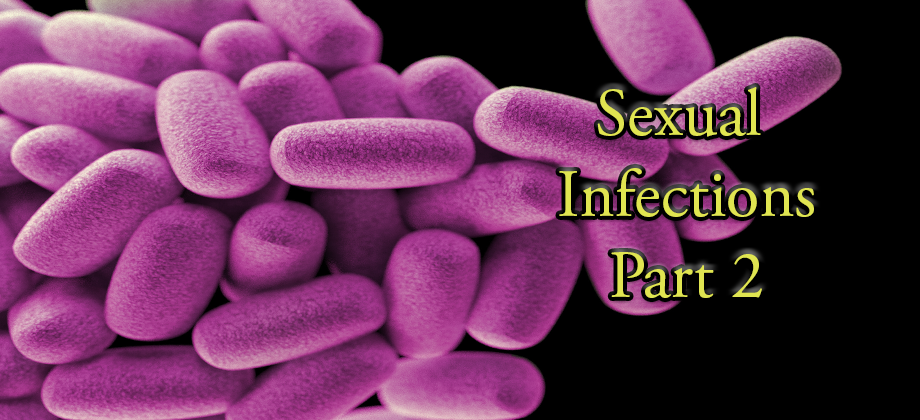
This is part 2 of my sexual Infections articles (part 1), and I’m here to discuss 3 more commonly discussed STIs and their symptoms because there are many of them out there! So, without further ado. let’s begin.
Genital Herpes
What Is It & How Do You Get It?
Genital Herpes is an extremely common lifelong STI that causes contagious sores to form on and around the penis, vagina, and/or anus. It usually transmits to another person through direct genital contact with the lesions that the herpes simplex virus type 1 (HSV-1) or the herpes simplex virus type 2 (HSV-2) causes.
The herpes simplex virus type 1, also known as oral herpes, takes the form of 1 or many cold sores around the mouth (it can also affect the nose, tongue, and face). There are two ways to catch HSV-1, sexually and non-sexually.
To obtain it sexually, an HIV-positive person’s sores must come in contact with an HIV-negative person’s private parts such as the anus or genitals during oral. This enables the virus to spread to these areas and cause genital herpes; this is when it is an STI. However, most people usually catch HSV-1 non-sexually during childhood by kissing, touching, or sharing with someone who has cold sores.
The herpes simplex virus type 2 is the one we all know as genital herpes. HSV-2 is a bit different than HSV-1 because it transmits almost exclusively through sexual intercourse. Usually, if someone has genital herpes, it is the herpes simplex virus type 2, not type 1 causing it. This is because the virus favors hiding in the sacral ganglion when it’s not active. This ganglion is near the lower back and closest to the genitals. HSV-1, on the contrary, favors hiding in the trigeminal ganglion behind the ear, so it’s more likely to affect the face. Though, as stated previously, HSV-1 can also cause genital herpes.
What Are the Signs & Symptoms?
When it comes to herpes, the signs are not always there because it’s commonly asymptomatic. If it is not, it can take 2-12 days for symptoms to appear. The most obvious indicator of genital herpes is the appearance of red or white itchy and painful blister clusters around the genitals, thighs, and anus. There are also some acute symptoms that are easy to overlook, such as pain while peeing, fever, body aches, chills, headaches, and swollen lymph nodes.
How to Protect Yourself from Genital Herpes
Prevention
Preventing genital herpes doesn’t have to be tough, and most people with them can continue to have healthy sex lives. Preventing genital herpes doesn’t have to be tough, and most people with them can continue to have healthy sex lives. To prevent genital herpes, it’s important to always use a condom &/or dental dam with a partner who might have HSV. Professionals also suggest abstaining from having sex with someone during a visual outbreak (when it’s most contagious) if the condom doesn’t cover up the entire infection, though it’s worth noting there is still a chance of contracting it if a flair-up is happening, even with a condom.
Treatment
There is no cure for genital herpes or herpes at all for that matter. Once you get HSV, you have it for life because it lies dormant in the body until the next break out. However, this isn’t as “end of the world” as it may seem because HSV is pretty manageable with drug treatment.
When a breakout first happens, a doctor will usually prescribe 7-10 days of antiviral medications to relieve some symptoms and/or prevent the bumps from getting worse. This treatment could be longer if the outbreak is still prevalent when the 10 days are up.
After the first treatment is up, there are two options to manage future outbreaks; Intermittent treatment and suppressive treatment. Intermittent treatment involves taking an antiviral pill when a flare-up begins to shorten the length of time it’s present as well as ease the symptoms related to it. Suppressive treatment, on the other hand, is for patients who have more frequent outbreaks and requires that they take antiviral pills every day to limit the number of flair-ups they have in general.


